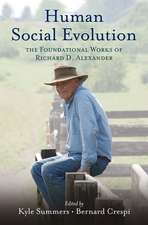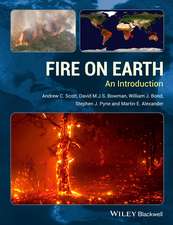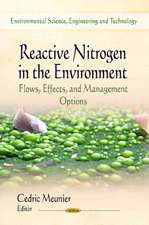The Effect of Fluorine-Containing Emissions on Conifers
Autor Anatoly S. Rozhkov Traducere de L. Kashhenko Autor Tatyana A. Mikhailovaen Limba Engleză Paperback – 23 dec 2011
Preț: 633.53 lei
Preț vechi: 745.32 lei
-15% Nou
Puncte Express: 950
Preț estimativ în valută:
121.24€ • 126.11$ • 100.09£
121.24€ • 126.11$ • 100.09£
Carte tipărită la comandă
Livrare economică 15-29 aprilie
Preluare comenzi: 021 569.72.76
Specificații
ISBN-13: 9783642770524
ISBN-10: 3642770525
Pagini: 156
Ilustrații: IX, 142 p. 5 illus.
Dimensiuni: 155 x 235 x 8 mm
Greutate: 0.23 kg
Ediția:Softcover reprint of the original 1st ed. 1993
Editura: Springer Berlin, Heidelberg
Colecția Springer
Locul publicării:Berlin, Heidelberg, Germany
ISBN-10: 3642770525
Pagini: 156
Ilustrații: IX, 142 p. 5 illus.
Dimensiuni: 155 x 235 x 8 mm
Greutate: 0.23 kg
Ediția:Softcover reprint of the original 1st ed. 1993
Editura: Springer Berlin, Heidelberg
Colecția Springer
Locul publicării:Berlin, Heidelberg, Germany
Public țintă
ResearchCuprins
Introduction: The Problem; Aims and Methods of Research.- 1 Fluorine as a Pollutant, Its Compounds in Industrial Emissions. Formation and Structure of Damaged Areas in Coniferous Forests.- 1.1 Acid Pollutants from Industrial Emissions and Role of Fluorides as Acid Pollutants.- 1.2 Fluorides in Emissions from Aluminium Smelters and Their Accumulation in Polluted Areas.- 1.3 The Effect of Mixing Hydrogen Fluoride with Other Acid Pollutants.- 1.4 The Spread of Fluorine from Emission Source.- 1.5 Formation of Zones that Differ in Fluorine Concentration and Extent of Conifer Damage.- 1.6 Summary.- 2 Resistance of Conifers to Fluorine. Tree Decline.- 2.1 General, Species and Individual Resistances.- 2.2 Factors Responsible for Duration of the Tree Decline Process.- 2.3 Accumulation of Fluorine by Trees in Zones Varying in Fluorine Concentration.- 2.4 Changes in Chemical Composition of Pine Needles in the Zone of Emissions from Aluminium Smelters.- 2.5 Dynamics of Seasonal Fluorine Accumulation and Injury of Trees.- 2.6 Reduction in Annual Wood Growth and Extent of Xylem Flow with Tree Decline.- 2.7 Summary.- 3 Fluorine Toxicosis in Conifers.- 3.1 The Corrosive Burn and Toxicosis in Plants.- 3.2 Pathways of Fluorine Entry into the Plant; Its Translocation, Localization and Removal.- 3.3 The Effect of Hydrogen Fluoride on Physiological-Biochemical Processes in Conifers.- 3.4 Summary.- 4 The Role of Insects in Fluorine-Damaged Stands.- 4.1 The Effect of Fluorine on Insects.- 4.2 The Reduction in Mechanisms of Plant Resistance to Damage by Insects.- 4.3 Succession of Entomocenosis in Polluted Stands, Resistant Groups of Insects and Adaptation.- 4.4 Survey of Dendrophages of Conifers.- 4.5 Numbers and Outbreaks of Xylophages.- 4.6 Summary.- 5 Maximum Permissible Concentrations ofFluorine for Conifers.- 5.1 Principles of Assessment of Maximum Permissible Concentrations (MPCs) of Toxic Substances for Plants.- 5.2 The System of Criteria for Assessment of Levels of Pollutant MPCs in Woody Plants.- 5.3 MPCs of Fluorine for Conifers.- 6 The Use of Conifers for Planting Protection Zones.- 6.1 Some Aspects of Designing the Planting Protection Zone.- 6.2 The Feasibility of Using Coniferous Species in Protection Zones.The Dahurian Larch Form of Higher Fluorine Resistance.- 6.3 Selection of Coniferous Nursery Trees.- 6.4 Deciduous Arboreal and Shrubby Plants Resistant to Fluorine.- Conclusion.- References.










